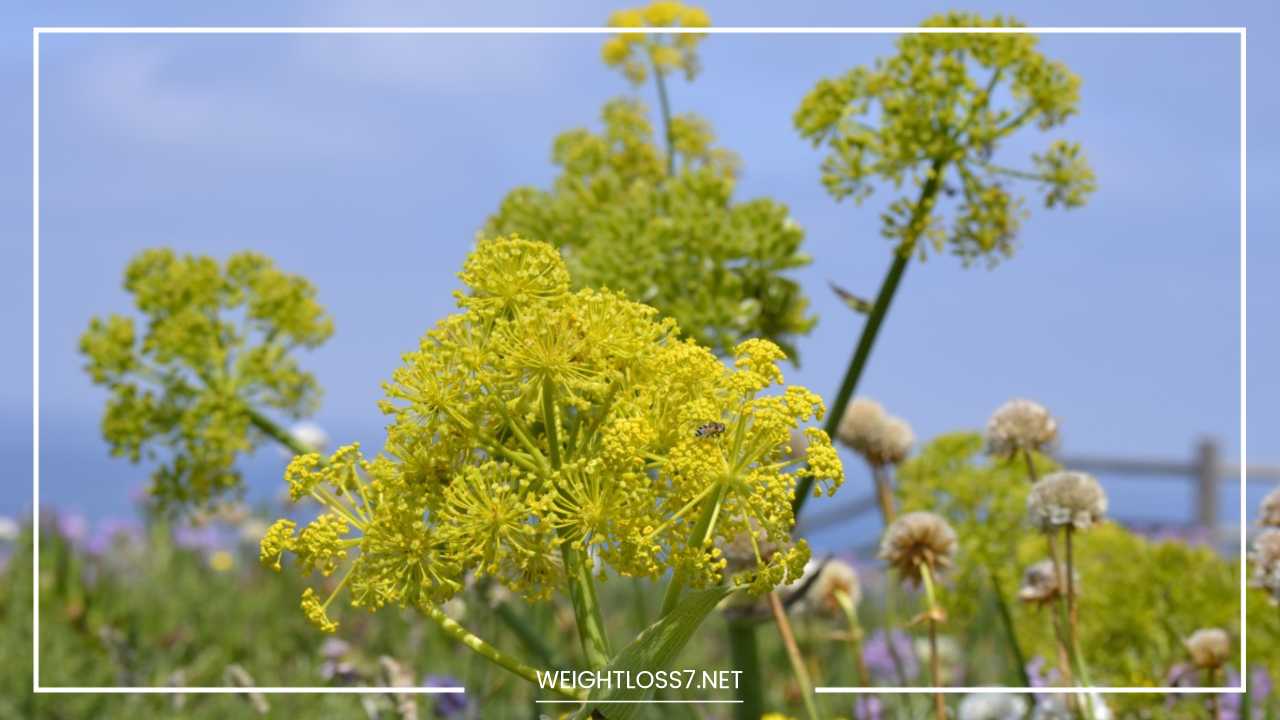Asafoetida Uses and Health Benefits

Asafoetida
Asafoetida: The Devil’s Dung with Heavenly Benefits
Asafoetida, a name that conjures images of both culinary intrigue and pungent defiance, has been a fascinating ingredient for millennia.
Often referred to as “devil’s dung” due to its strong, sulfurous aroma, this resinous gum extracted from the Ferula asafoetida plant holds a surprising depth of flavor and a treasure trove of potential health benefits.
A Journey Through Time: The Ancient Origins of Asafoetida
The history of asafoetida stretches back to the fertile cradle of civilization, the Fertile Crescent region encompassing parts of the Middle East and Central Asia.
Its use finds mention in ancient texts like the Ebers Papyrus (1550 BC) and archaeological evidence suggests its presence in trade routes dating back as far as 3000 BC.
Cultivating asafoetida is a labor-intensive process. The Ferula asafoetida plant thrives in harsh, arid environments and takes several years to mature.
Once mature, the stem is cut just before flowering, and a milky sap is extracted. This sap is then sun-dried and hardened into the characteristic gum-like form we recognize today.
The entire process is meticulous, and the resulting asafoetida can vary significantly in quality and aroma depending on the region, age, and processing techniques.
Aromatic Alchemy: Unveiling the Magic of Asafoetida in the Kitchen
Despite its initial olfactory challenge, asafoetida is a cornerstone of Indian cuisine, particularly in vegetarian dishes.
Often used as a substitute for onions and garlic, it adds a unique savory depth that some describe as a combination of roasted garlic, cheese, and the sea.
This unique quality makes asafoetida a game-changer for those seeking to create flavorful vegetarian and vegan dishes.
Here’s a deeper dive into unlocking the magic of asafoetida in your kitchen:
- The Art of Tempering: Asafoetida’s true flavor potential lies in the magic of tempering. Heat a small amount of ghee or oil in a pan until shimmering. Then, add a pinch of asafoetida (about ¼ teaspoon) and let it sizzle for a few seconds. This releases the volatile compounds responsible for its distinctive aroma and unlocks the full depth of its flavor.
- A Match Made in Culinary Heaven: Asafoetida pairs beautifully with a variety of spices commonly used in Indian cuisine. Turmeric, cumin, coriander, fennel, and mustard seeds are all excellent companions. It also complements vegetables like potatoes, cauliflower, Brussels sprouts, and legumes like lentils and chickpeas.
- Start Low and Slow: As a general rule, a little goes a long way with asafoetida. Its strong aroma can overpower a dish if used excessively. Begin with a small pinch and adjust according to your taste preference.
Beyond the Plate: Exploring the Potential Health Benefits of Asafoetida
Traditionally used in Ayurvedic medicine for centuries, asafoetida is increasingly attracting scientific interest for its potential health benefits. Here are some promising areas of exploration:
- Digestive Relief: Asafoetida’s carminative properties are believed to help alleviate gas, bloating, and indigestion. Studies suggest that it may stimulate the digestive system by increasing bile production and promoting the growth of healthy gut flora.
- A Natural Antidote to Nausea: Asafoetida has been used traditionally to combat nausea and vomiting. Some studies suggest it may be effective in reducing nausea associated with morning sickness and motion sickness.
- Respiratory Aid: Asafoetida’s expectorant properties may help loosen phlegm and ease symptoms of asthma, bronchitis, and coughs. Its anti-inflammatory effects may also provide relief from respiratory discomfort.
- Antioxidant Powerhouse: Research indicates that asafoetida is rich in coumarins and other antioxidant compounds. These antioxidants can help combat free radical damage in the body, potentially reducing the risk of chronic diseases like heart disease, cancer, and neurodegenerative disorders.
- Potential Benefits for Women’s Health: Traditionally, asafoetida has been used to regulate menstrual cycles and alleviate menstrual cramps. While more research is needed, some studies suggest it may help regulate hormonal imbalances.
Important Considerations: Side Effects and Precautions
While asafoetida is generally safe for most people in moderate amounts, it’s important to be aware of potential side effects and precautions:
- Strong Odor: The powerful smell of asafoetida can be quite pungent. Consider storing it in an airtight container to prevent it from permeating your kitchen cabinets.
- Skin Irritation: Direct contact with asafoetida can irritate the skin in some individuals. Wearing gloves while handling it is advisable, especially for those with sensitive skin.
- Pregnancy and Breastfeeding: Pregnant and breastfeeding women should consult with their healthcare provider before using asafoetida due to limited research on its safety during these periods.
- Blood Thinning Effects: Asafoetida may have blood-thinning properties. If you are taking blood-thinning medications or have a bleeding disorder, consult with your doctor before using asafoetida.
- Potential for Allergic Reactions: In rare cases, some individuals may experience allergic reactions to asafoetida, manifesting as skin rashes, itching, or breathing difficulties. If you experience any adverse reactions, discontinue use and consult a healthcare professional.
A Global Spice with Diverse Applications
Asafoetida’s influence extends far beyond the borders of India. It’s a common ingredient in Iranian cuisine, where it’s known as “angazeh” and used in stews and dips.
In Afghanistan, it’s called ” hing” and adds a unique touch to flatbreads and lentil dishes. Yemeni cuisine also embraces asafoetida, incorporating it into their national dish, “foul medames” (fava beans with spices).
The Science Behind the Spice: Ongoing Research on Asafoetida
While much of the traditional knowledge surrounding asafoetida’s health benefits is promising, ongoing scientific research is crucial to validate its efficacy and understand its mechanisms of action. Here’s a glimpse into some ongoing areas of exploration:
- Antimicrobial Properties: Test-tube studies suggest that asafoetida may possess antibacterial and antifungal properties. Further research is needed to determine its effectiveness against specific pathogens and its potential applications in food preservation or wound healing.
- Neurological Benefits: Some studies suggest that asafoetida’s antioxidant properties may have neuroprotective effects and could potentially help with memory and cognitive function. However, more research is needed to determine its efficacy in managing neurological conditions.
- Anti-Cancer Potential: Animal and test-tube studies have shown promise for asafoetida’s potential to inhibit the growth and spread of certain cancer cells. Further research is needed to explore its effectiveness in human trials and understand the underlying mechanisms.
Asafoetida – A Spice Worth Exploring
Asafoetida is a unique and multifaceted ingredient that transcends its initial olfactory challenge. It adds an intriguing depth of flavor to vegetarian and vegan dishes, while also offering a range of potential health benefits.
From digestive relief to antioxidant power, asafoetida’s potential applications are vast and continue to be explored by the scientific community.
If you’re looking for a way to add a new dimension to your cooking or a natural approach to promoting your well-being, consider incorporating asafoetida into your diet.
Remember to start slow, be mindful of potential side effects, and consult with your doctor if you have any concerns.
With its rich history, diverse culinary applications, and promising health benefits, asafoetida is a spice worth exploring.
Additional Information and Fun Facts about Asafoetida
To round out this blog post on asafoetida, here are some additional tidbits and interesting facts that can add intrigue and depth to your content:
-
Nicknames and Folklore: Asafoetida’s strong odor has earned it a variety of colorful nicknames around the world. Besides “devil’s dung,” it’s also known as “food of the gods” in some cultures, highlighting its perceived duality of aroma and flavor. Folklore surrounding asafoetida abounds, with some cultures believing it wards off evil spirits or promotes fertility.
-
Selection and Storage: When selecting asafoetida, look for a light-colored resin with a strong, pungent smell. Avoid purchasing darkened or powdery asafoetida, as this indicates lower quality or age. Store asafoetida in an airtight container in a cool, dark place to preserve its flavor and aroma.
-
Substitutes for Asafoetida: If you’re unable to find asafoetida or the smell is too strong for your preference, there are a few potential substitutes. A combination of roasted garlic, hing (a milder form of asafoetida), a pinch of onion powder with a touch of turmeric, or a small amount of fenugreek seeds can offer a somewhat similar flavor profile. However, none can truly replicate the unique depth and complexity of asafoetida.
-
Culinary Inspiration: For those looking to delve deeper into using asafoetida in the kitchen, here are some recipe ideas to get you started:
- Dal Makhani: This creamy black lentil dish is a staple of Indian cuisine and gets its rich flavor boost from a touch of asafoetida.
- Aloo Gobi: This popular potato and cauliflower stir-fry is another great way to experience the magic of asafoetida.
- Samosas: These savory fried pastries are often filled with spiced potatoes and peas, and a touch of asafoetida adds a unique depth to the filling.
- Lentil Soup: Asafoetida can add a savory complexity to lentil soups, complementing other warming spices like cumin and coriander.
By incorporating asafoetida into your culinary repertoire, you can explore new flavor profiles and embark on a delicious journey through the world of Indian cuisine.
Final Word
Asafoetida is more than just a pungent spice; it’s a cultural touchstone, a culinary game-changer, and a potential source of health benefits.
So, the next time you encounter this unique ingredient, take a moment to appreciate its history, explore its flavor potential, and perhaps even unlock its potential health advantages.
With a little curiosity and an open mind, asafoetida can transform your cooking and your perception of spices forever.
Disclaimer: This blog post is for informational purposes only and should not be construed as medical advice. Always consult with your healthcare professional before using any herbal remedy or making significant changes to your diet.

















